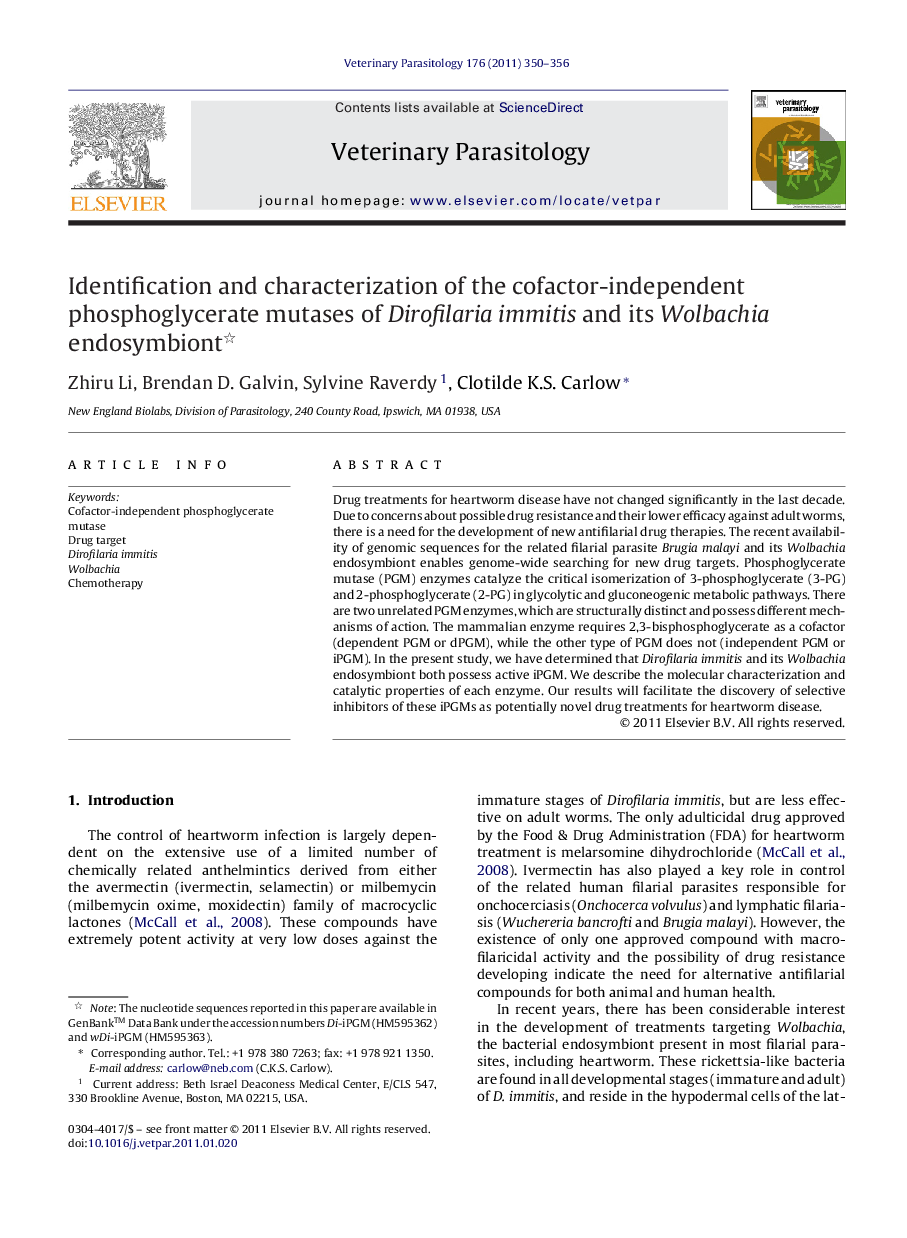| Article ID | Journal | Published Year | Pages | File Type |
|---|---|---|---|---|
| 2470377 | Veterinary Parasitology | 2011 | 7 Pages |
Drug treatments for heartworm disease have not changed significantly in the last decade. Due to concerns about possible drug resistance and their lower efficacy against adult worms, there is a need for the development of new antifilarial drug therapies. The recent availability of genomic sequences for the related filarial parasite Brugia malayi and its Wolbachia endosymbiont enables genome-wide searching for new drug targets. Phosphoglycerate mutase (PGM) enzymes catalyze the critical isomerization of 3-phosphoglycerate (3-PG) and 2-phosphoglycerate (2-PG) in glycolytic and gluconeogenic metabolic pathways. There are two unrelated PGM enzymes, which are structurally distinct and possess different mechanisms of action. The mammalian enzyme requires 2,3-bisphosphoglycerate as a cofactor (dependent PGM or dPGM), while the other type of PGM does not (independent PGM or iPGM). In the present study, we have determined that Dirofilaria immitis and its Wolbachia endosymbiont both possess active iPGM. We describe the molecular characterization and catalytic properties of each enzyme. Our results will facilitate the discovery of selective inhibitors of these iPGMs as potentially novel drug treatments for heartworm disease.
